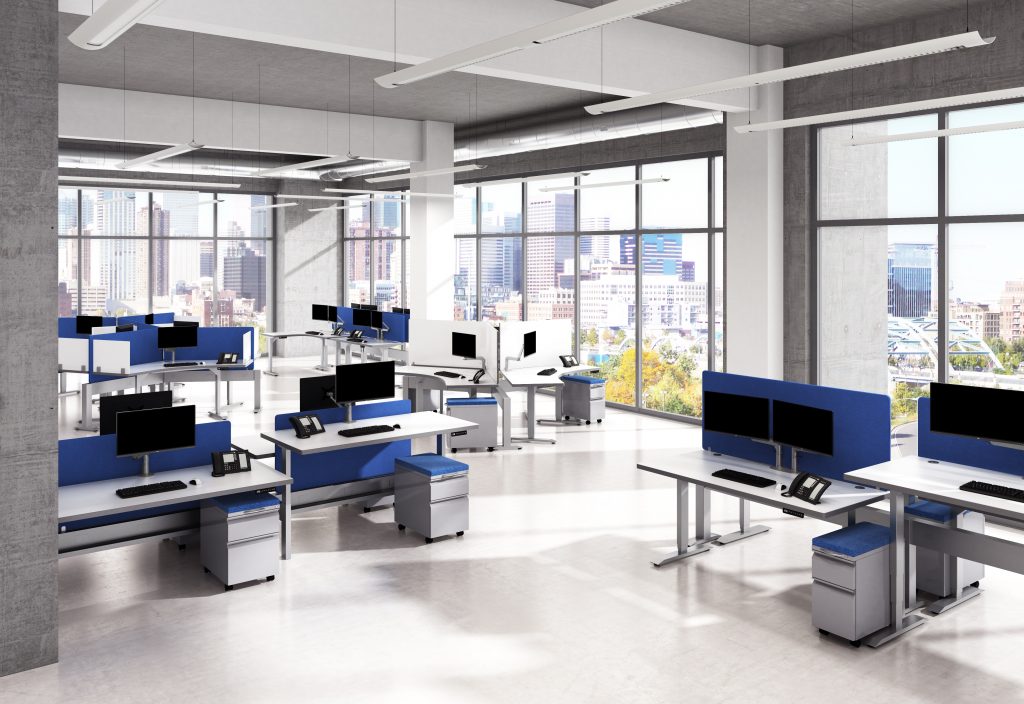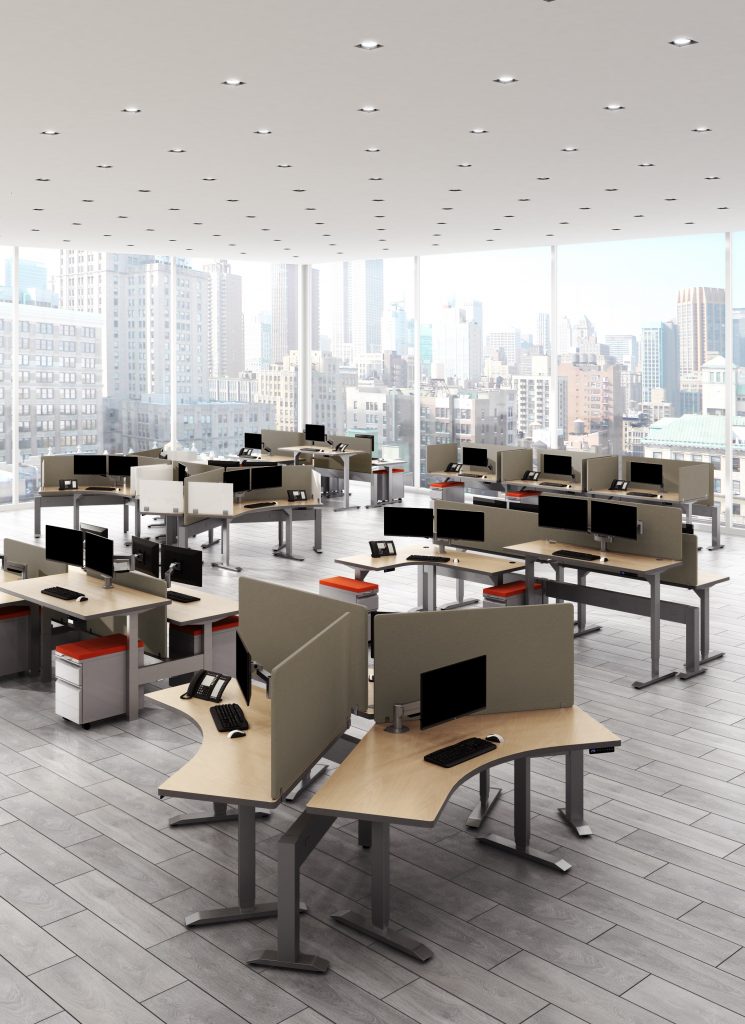Can dynamic workspace design really help employees break their slouching habits?

Business leaders wrestle with a multitude of issues and trends that impact profitability and productivity, and employee wellbeing has risen in their hierarchy of priorities. In the past, employees’ posture at their desks was rarely included in their wellness concerns. That mindset has changed as “occupational ergonomic hazards” — like slouching at your desk — have come into focus as a bottom-line business challenge.
Bad posture can trigger a host of maladies – the most prevalent being back and neck pain. According to the American Chiropractic Association, in the U.S., back pain accounts for more than 264 million lost workdays a year – two full workdays for every full-time worker. Estimates of the cost and lost revenue from neck and back pain range from $50 to $100 billion per year and the problem is escalating. According to the American Posture Institute, we’re slouching more now than ever.
One of the main reasons for poor posture is our increased use of technology – in particular mobile devices. Even in highly mobile workplaces where employees move around regularly, a person’s dominant working position —sitting or standing — poses posture related health risks whether they work in a fixed workspace or in different places throughout the office.

Prolonged sitting has been proven to be bad and many workers still spend more than half of their workday seated. The Centers for Disease Control (CDC) has reported that prolonged sitting is linked to various health issues including premature mortality, cardiovascular disease, diabetes, and cancer, as well as obesity. The CDC’s Take-a-Stand Project found that reducing sitting time by 66 minutes per day using sit-and-stand workspace devices reduced upper back and neck pain by 54 percent.
Based on this data, one would assume that more standing at work would be the clear solution. However, recent CDC studies indicate that prolonged standing at work can also lead to back and muscle pain, and physical fatigue. As such, the answer to better office ergonomics lies in a workplace design that is adaptive and kinetic, with no one sitting or standing in one place all day.
Businesses are starting to respond to this growing trend, but a challenge in creating office spaces that truly foster better health and ergonomics is that poor posture is not just a result of technology overuse or workspace configuration, it’s a bad habit.
Can dynamic workspace design help employees break their slouching habits? Yes, quite likely.

The latest most ergonomically conscious workspace furniture and fixtures allow the height, angle and position of desks, tables, and monitors to be easily changed to fit optimal office layouts. These elements can also be personalized to each employee to create a workspace that helps promote individual wellness. Technologically advanced desk and table designs feature memory setting that allows workers to easily set their ideal sitting or standing height and bring the desk or table back to that setting with a push of a button. Adjustable monitor arm designs allow screens to be set at the optimal height and angle to reduce extended periods of downward or upward neck tilt and excessive right-left neck movement.
These innovations accommodate a smooth transition from sitting to standing and help sustain better body positioning and fluid movement —which over time can help employees shed their bad posture habits. In addition to helping reduce slouching, automatically adjustable furniture allows employees to change their work position depending on their mood or energy level, without disrupting their work. The ongoing reinforcement of positive posture and mindset can lead to increased productivity and reduced absenteeism.

Beyond ergonomics, these new designs enable dynamic workspace configurations to meet the need for open plan spaces, co-working spaces and remote work in satellite offices. They are ideally suited for creatives and designers, who spend eight to ten hours at a workstation working with multiple monitors. They effectively serve call centers where people rotate through a workspace between each shift. And they easily support shared work environments, where a physical space may need to be reconfigured quickly to accommodate a new tenant, a new design plan or even a new piece of technology for those individuals working in that space. Further, adjustable desks and tables that support multiple memory height settings accommodate seamless co-working. This is important because research from the Global Coworking Unconference Conference (GCUC) reports that shared office environments have grown at a rate of 200 percent in recent years and are expected to support 5.1 million co-working members by 2022.
Employee wellness is a business priority whether that office supports creatives, consultants, coders, or customer service reps. A study in the Journal of Occupational and Environmental Medicine indicates that the increased productivity of healthier employees is worth an additional $471.4 million to U.S. businesses in annual savings. Improving workplace ergonomics and taking the guesswork out of personalizing each employee’s workspace to minimize bad posture and maximize comfort will make your employees healthier, happier, more productive and more present.
**SPONSORED SOLUTION** Novus set out to create a quality monitor arm that will suit any professional space. It needed to be easy to adjust for ergonomic viewing, durable for long-lasting performance, stylish, easy to install, and be price competitive. Click here to see the outcomes!


